
Many people form their impression of New Jersey based on driving down the New Jersey Turnpike after leaving New York City or arriving at Newark Airport. The impression is not a pretty one with the unsightly Pulaski Skyway, industrial wastelands, refineries, landfills and a generally miserable look to that area.
The reality of New Jersey can be quite different than the first impression, particularly as you get away from the Turnpike. Somerset Hills is located about forty minutes west of Manhattan in an affluent part of the state, in the town of Bernardsville. The Bernardsville-Basking Ridge-Far Hills area is New Jersey's equivalent of Greenwich or of Manhattan's Upper East Side. This is horse country, made up of gently rolling terrain and sprinkled with mansions made from Wall Street and pharmaceutical fortunes. Jacqueline Kennedy Onassis and Meryl Streep were one time residents of Bernardsville. The area is also home to the U.S. Equestrian Team and the U.S.G.A. The course takes its name from the name of the county it is located in. The club's logo incorporates the crest of the (English) Duke of Somerset. Given its proximity to the U.S.G.A., located about ten minutes away, and its storied place in the game, Somerset Hills has a long-standing tradition of letting executives from Golf House play the course. For the rest of us, we have to be invited by a member.
Somerset Hills represents the type of club that I like very much. It is old, traditional and conservative. It reminded me of Myopia Hunt Club in Massachusetts with its original, reassuring and discrete clubhouse and civilized and understated approach to everything. In other words, it is the antithesis of the nearby Trump debacle, which is overdone, tacky, ostentatious, crass, coarse and over-engineered in its need to show how impressive it is. At Somerset Hills, they don't have to try to impress, because they are the genuine article. The small clubhouse, pro shop and outdoor deck fit perfectly into the landscape and have a patina that can't be bought and only develops with age and a respect for the past. The course has two perfectly manicured grass tennis courts, confirming its gentrified and genteel approach as a private club.
The Golf Course
The golf course at Somerset Hills Country Club (ranked a beguiling #69 in the world) was built by A.W. Tillinghast in 1917. Part of the course was carved out of a former racetrack. A par 71, Somerset Hills plays to a total yardage of 6,659 and a slope rating of 132. As was Tillinghast's tradition, each of the holes at Somerset Hills was given a name by the architect.
#2 Redan - hard start to the round
Tillinghast went with the 'difficult start' philosophy at Somerset Hills. The first hole, "Orchard" plays through an old orchard and is a very testing 448 yard par four that doglegs to the right. The second hole is a classic "Redan" hole, seen above, and it's a beauty. At 175 yards it has all the classic elements of a Redan and it plays very difficult, even though it is rated as the #15 handicap hole.
Uphill approach to the 3rd green
The third hole, named "Bunker Hill", is a shortish, 378 yard par four that plays to an elevated green that is well protected by bunkers.
5th green with the big hump cutting across
The fifth hole, oddly enough named "Nairn" (I guess it reminded Tillinghast of the town in Scotland?) has a green design that Tillinghast used on several holes at Somerset Hills. As can be seen in the picture above, there is a very large hump running across the green. As a short course by modern standards, Somerset Hills is by no means an easy course. Part of the reason is green designs such as this, and also, very fast greens.
Old race-course running through the 6th hole
I liked the par five, sixth hole ("Plateau"), which has the outline of the old racetrack still running through the fairway. You can see where the track winded around the edge of the property, through the sixth and seventh ("Racetrack") fairways and where it turns at the end of the seventh fairway and heads back toward the clubhouse. You can see the big dip in the fairway in the picture above.
You can still imagine the races running through the 6th hole
Many thanks to my caddy for providing the proper perspective and sense of scale to this unique hazard. You can get a good feel in this picture of how Tillinghast used the racetrack to great effect. It was a brilliant design decision on his part.
Some courses have a front and back nine that are reasonably similar in feel and style. Somerset Hills does not. It has two distinctly different sets of nine. The front nine is relatively flat and plays on relatively open ground in the area where the former racetrack was situated. The back nine is set within the forest, has many tree-lined holes, and has much more change in elevation.
Approach to the 11th green
The eleventh hole, aptly named "Perfection", is rated as the #4 handicap hole at Somerset Hills, but in my book is clearly the most difficult hole on the course. It is a 412 yard par four that requires the golfer to hit his/her tee shot through a narrow chute of trees to a landing area that slopes left to right down a hill. Shots hit too far to the right are blocked out, leaving no approach to the green, so the tee shot requires precision and the appropriate position.
The hole is a sharp dog-leg to the right after the tee shot. The second shot plays from an uneven lie, over a creek, to a difficult, elevated and well-bunkered green.
 View from 11th green back up to clubhouse
View from 11th green back up to clubhouse In addition to being a difficult and brilliantly designed golf hole, the eleventh hole is also scenically beautiful. There is a pond left of the green and right of the green is a sharp hill that rises to the clubhouse and is covered in fescue (seen above).
#12 par three named "Despair,"
The next hole, a 151 yard par three named "Despair", shows off a design feature Tillinghast didn't use often, which is a green set within/around water. It requires a precise shot because the area you hit from is narrow and there are trees encroaching on the right side.
 #13 green
#13 green The thirteenth green, above, shows that even on relatively straight forward driving holes, there is no letup at Somerset Hills, given the big undulations used strategically by Tillinghast. This one looks like a wave rolling in from the sea.
The par four fifteenth hole, named, "Happy Valley," joins a small list of truly world-class holes that I have found in my travels playing these elite courses. See the entire list here. The 407 yard par four is seen from the tee below.
15th from tee "Happy Valley"
You can see the strategic options off the tee, which allows a player to hit safely to the left, or to choose a bolder line over the bunker and be rewarded by cutting off the corner of the dogleg and advancing the ball significantly down the hill toward the green.
15th hole sloping fairway
You can see the big left to right slope in the fairway as it plunges down the hill toward a small green protected by water in front and on the left side by both water and a weeping willow tree.
15th small green down in the valley
It's during this stretch of the course that I realized why I like Tillinghast routings like this one, Quaker Ridge and Baltimore Five Farms. There is so much change, variation, brilliant use of terrain and character to his routings that they just charm you into submission. I appreciate this type of layout more than a Winged Foot or Baltusrol where so much of the character and challenge is in the greens only.
Par three 16th "Deception" green
The back nine meanders through the hills. The fifteenth plays down the big sweeping hill. The next hole, the 170 yard par three sixteenth, is carved into the side of a hill. The hole after that, the seventeenth ("Quarry"), a par four with a blind tee shot over a hill, features a second shot down the hill to a tough green. The back nine has a set of holes that fit together like a glove and are as good as any you'll find.
The eighteenth is a short, 335 yard par four that plays up a big hill toward the clubhouse and is not that hard. It is the only hole that is worthy of the slightest bit of criticism on the back nine.
Getting everything right at a golf club is more art than science, but at Somerset Hills they have it all figured out. The small locker room and bar, the discrete, respectful staff and a refined approach to everything. Maybe it was hard for me to be objective playing here. As you can see from my pictures, I played it on such a nice fall day that the course really shined. I love to golf during the fall with its shorter days, crisp weather, diffused light, the sound of leaves crunching under your spikes and the sound of birds flying south (yes, I'm still a fan of Canadian Geese despite what they've done to Medinah). Since this was a home game for me I made it back home in time for dinner to appease my delightful wife who is becoming increasingly irascible about my golfing travels. I wonder why?
After having now played all of A.W. Tillinghast's courses, I would personally rank them in the following order: 1. San Francisco; 2. Somerset Hills; 3. Bethpage Black; 4. Baltimore (Five Farms); 5. Quaker Ridge; 6. Winged Foot (East); 7. Winged Foot (West); 8. Baltusrol (Lower).
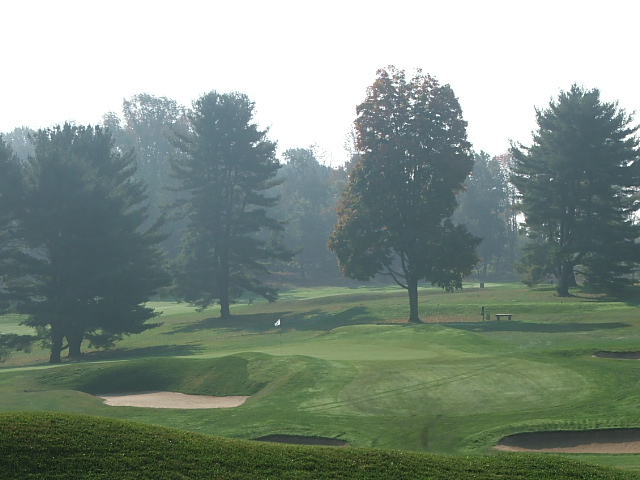
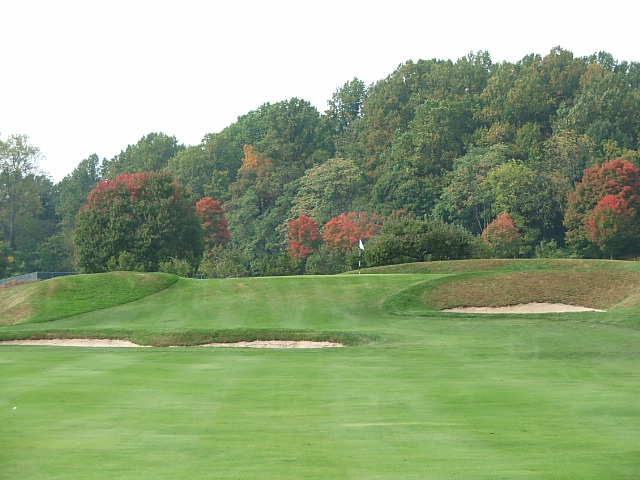
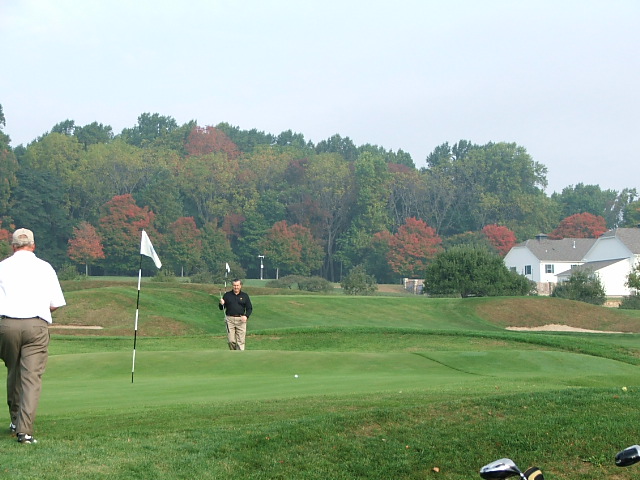
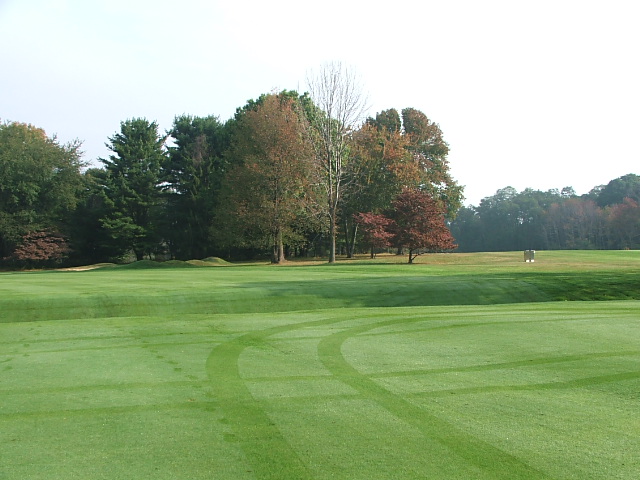



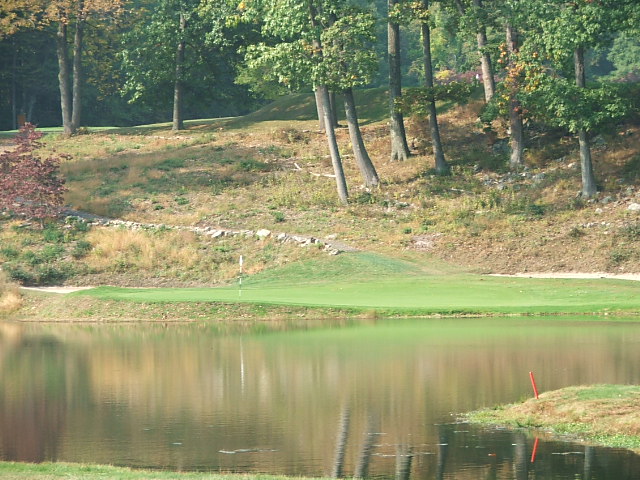
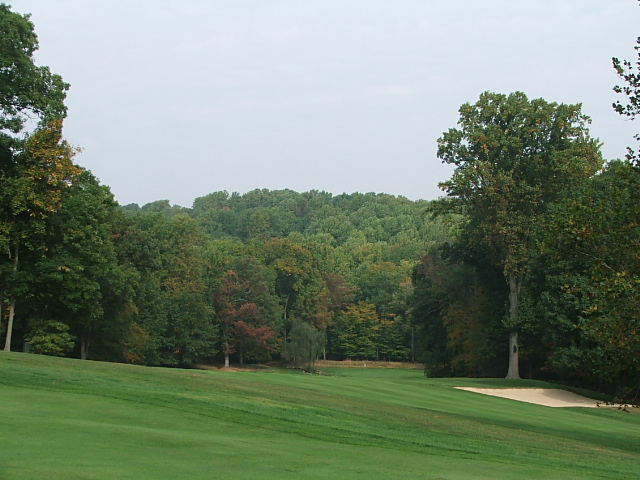
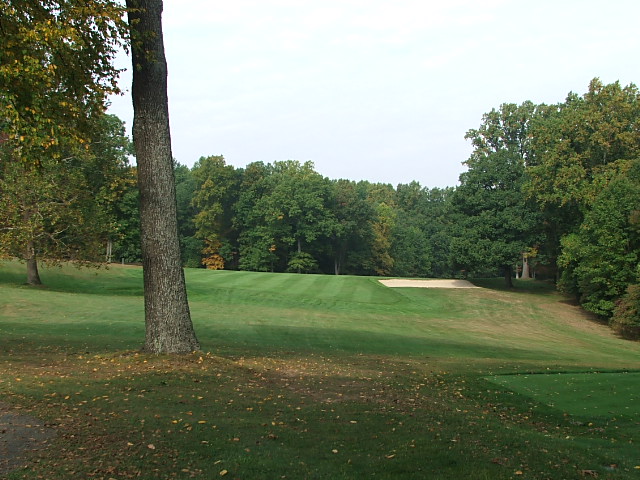
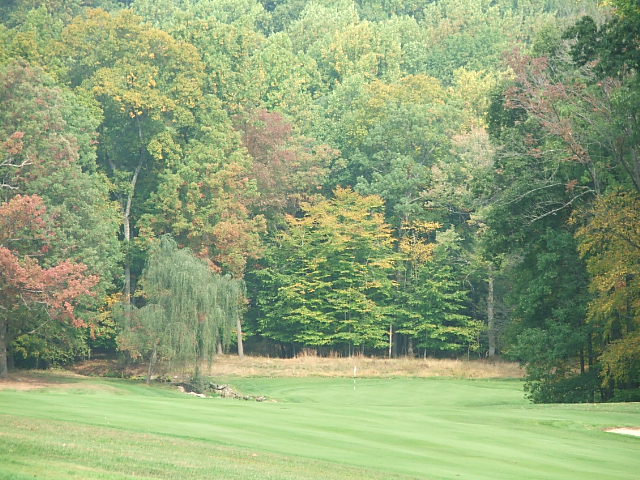

No comments:
Post a Comment